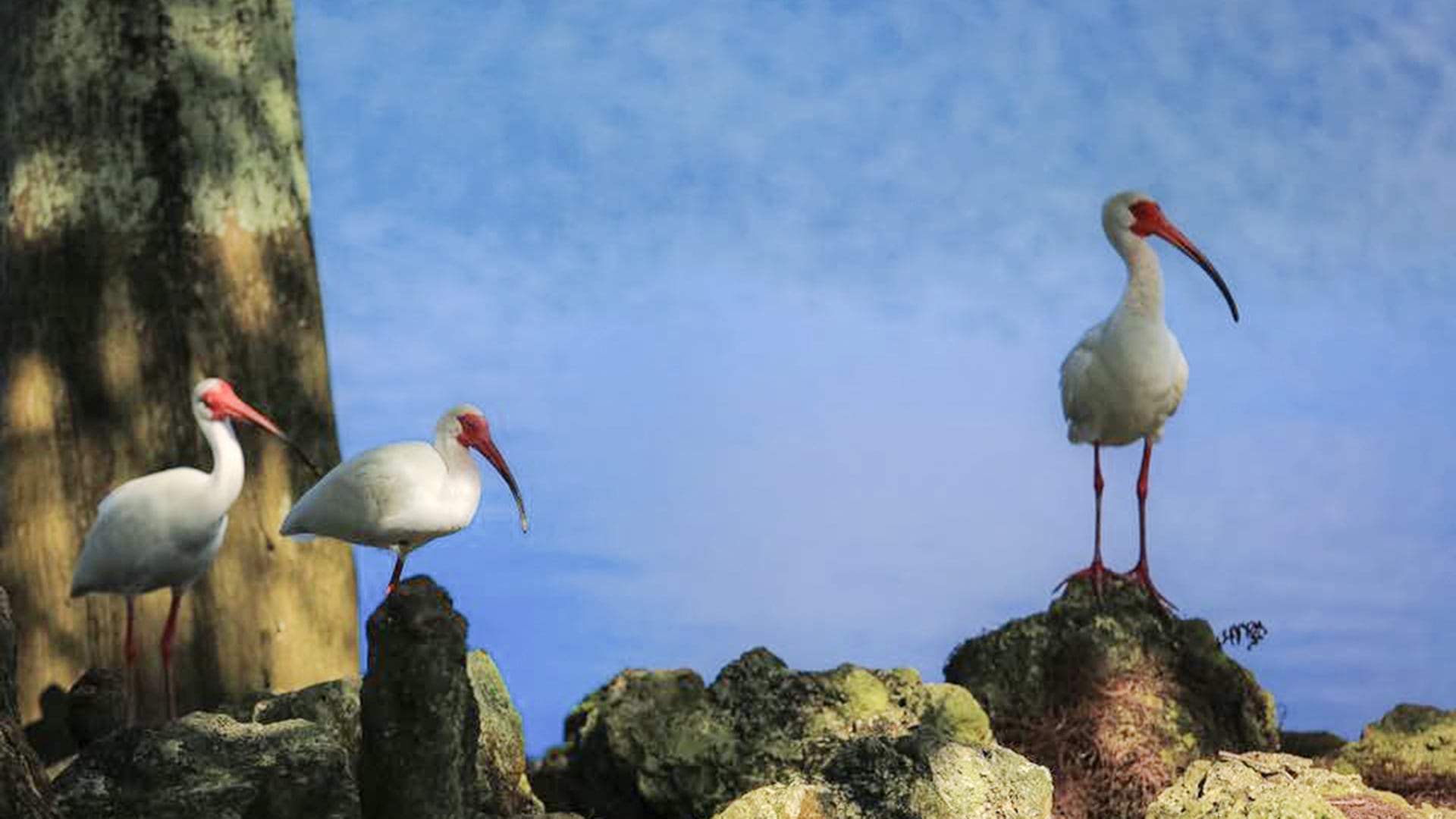ORLANDO,Fla.
– Across Florida’s wetlands, in Native American folklore, and probably your yard, the white ibis has earned the nickname “hurricane bird.”
Story goes that these birds sense approaching storms before anyone else and return to the skies soon after the threat is gone. So, what’s the real reason behind this bird’s reputation?
Nature’s storm watchers
Ibises, like many birds, can detect subtle environmental shifts like pressure changes, distant low-frequency sounds, even electric and magnetic cues, that signal an oncoming storm. Some seabirds have even been scientifically observed altering their flight to head toward the storm’s eye, where wind speeds are lower.
Folklore rooted in behavior
Native American traditions hold that the white ibis takes shelter last before a hurricane and is the first bird back once skies clear. Whether rooted in observational truth or storytelling, these tales have persisted for generations and inspired admiration for the ibis’s resilience.
What the science says
Though dramatic hurricane flights haven’t been documented in ibises, studies on other birds show impressive storm-avoidance behaviors. The National Marine Sanctuary Foundation says it’s likely that the ibis shares this innate sensitivity to barometric pressure and atmospheric changes.
A symbol of resilience
Whether it’s the science or the folklore you want believe or both, the ibis is iconic. Why? Because of their storm-timed behavior, the ibis actually became a symbol of optimism and survival. So much so, that in 1926, the University of Miami adopted the American white ibis as its athletic mascot, Sebastian the Ibis, highlighting courage in the face of adversity.
Today, the ibis’ reputation continues to inspire. It reminds us of nature’s subtle wisdom and how animals adapt to extreme weather. Whether you’re a birdwatcher, folklore lover, or storm chaser, the ibis’s story bridges science and myth in a powerful way.








